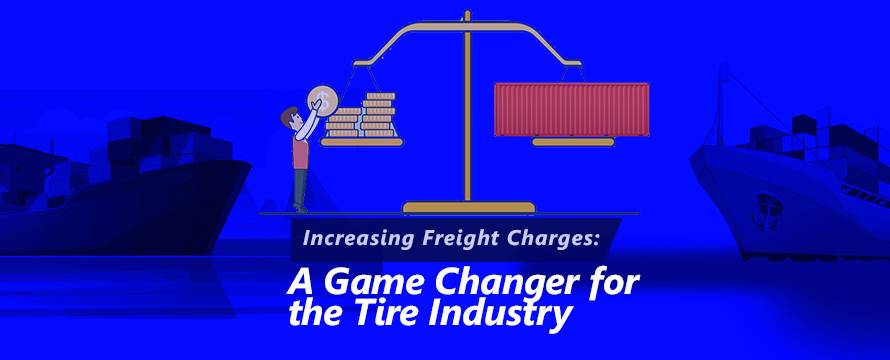The Constant Issue of Under-Inflation in Truck Tyres
Tyre inflation remains a serious concern for fleet managers, despite various discussions and efforts to address the issue. Whether it’s the loss of efficiency due to under- or over-inflation, premature tyre pulls, or tyre failures, the effect on fleet maintenance budgets is undeniable.
The consequences of under-inflated tyres go beyond financial constraints. Fuel efficiency takes a hit when tyres are not ideally inflated, leading to heightened operational costs. Additionally, safety concerns arise as under-inflated tyres increase the risk of accidents and compromise vehicle stability. Considering these challenges, it becomes necessary for fleet managers to delve deeper into the causes contributing to under-inflation and explore effective solutions.
Maintaining Tyre Inflation for Ideal Performance
While tyre pressure monitoring systems (TPMS) and automatic tyre inflation systems (ATIS) exist, the most effective solution often lies in going back to basic practices. Despite the challenges posed by the on-demand nature of the trucking industry, taking the time for these basic practices is necessary. Fleet managers play a vital role in setting the tone and ensuring drivers understand the importance of proper inspections.
Fleet safety and efficiency start with the basics. Setting aside time for pre- and post-trip inspections is not just a recommendation but a major requirement. This is especially critical during the pre-trip inspection when tyres are cold, providing a more accurate evaluation of their inflation status. Investing a small amount of time yields benefits in terms of lowered maintenance costs, heightened efficiency, and improved road safety.
Stick to Speed Limits: One of the foundational characteristics of tyre management is sticking to speed limits. Refrain from exceeding the maximum recommended speed for your tires, which might be lower than the posted speed limits. Excessive speed creates additional heat, raising the risk of tyre failure and compromising overall tyre performance. By strictly following speed recommendations, fleet managers can maintain tyres from unnecessary wear and tear, contributing to extended tyre life and reduced operational costs., to pre- and post-trip checks, educating drivers about the impact of tyre inflation on overall fleet performance is essential. Drivers should be aware that their carefulness in conducting these inspections directly influences the lifespan of tyres and the overall safety of the vehicle. Establishing a culture where drivers understand the importance of these routine checks can substantially contribute to alleviating the persistent issue of under-inflation.
Holistic Approaches to Tyre Management for Fleet Managers
For fleet managers aiming for a comprehensive tyre management strategy, Kidd provides detailed and actionable insights to ensure that truck tyres not only endure the challenges of the road but roll productively for an extended lifespan:
- Stick to Speed Limits: One of the foundational characteristics of tyre management is sticking to speed limits. Refrain from exceeding the maximum recommended speed for your tires, which might be lower than the posted speed limits. Excessive speed creates additional heat, raising the risk of tyre failure and compromising overall tyre performance. By strictly following speed recommendations, fleet managers can maintain tyres from unnecessary wear and tear, contributing to extended tyre life and reduced operational costs.
- Maintain Accurate Inflation: Consistent and proper inflation is the foundation of ideal tyre performance. Fleet managers must stress the importance of setting and maintaining proper cold inflation pressures. Regularly examining and adjusting tyre pressures as needed is a necessary practice that contributes not only to tyre’s lifespan but also to overall fleet efficiency.
- Choose the Right Tyre: Fleet managers should particularly select tyres based on a thorough understanding of the fleet’s requirements. Consider aspects such as load carrying capacity, proper tyre size, speed capabilities, and service type specific to the tasks at hand. Investing time in selecting the appropriate tyre for the task contributes to long- term cost savings and fleet performance.
- Utilize TPMS Systems: Adopting technology is a crucial element of contemporary tyre management. Tyre Pressure Monitoring Systems (TPMS) gives real-time data on tyre pressures and temperatures. Fleet managers should set up TPMS systems in their vehicles and ensure drivers are skilled at understanding and responding to the information presented. TPMS not only enhances safety by alerting drivers of potential issues but also supports proactive maintenance, minimizing the effects of under-inflation and over-inflation on tyre longevity.
- Frequent Inspections: Regular inspections are necessary within a thorough tyre management strategy. Fleet managers should promote thorough checks, going beyond routine pre- and post-trip inspections. Drivers should precisely examine tyres for signs of damage, including cracks, bulges, cuts, and penetrations. Establishing a proactive tyre care culture through regular inspections is an investment that yields dividends in reliability, safety, and reduced maintenance costs.
A proactive approach to tyre management requires applying preventive measures to extend tyre life, enhance overall fleet safety, and improve fuel efficiency. Fleet managers should consider establishing a thorough training program for drivers, highlighting not only the importance of regular inspections but also providing insights into the broader aspects of tyre management.
Conclusion
To conclude, the consequences of neglecting this crucial aspect range from decreased efficiency to safety concerns. Fleet managers must take the lead in emphasizing the importance of pre- and post-trip assessments and encourage drivers to prioritize them. By implementing a holistic approach to tyre management, considering factors such as tyre selection, speed limits, and regular inspections, fleets can ensure their trucks stay on the road, delivering goods safely and efficiently.





